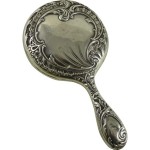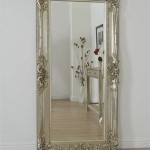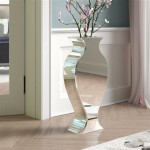Mirroring TV Screen to Projector
Projectors offer an immersive viewing experience, transforming movie nights, presentations, and even gaming sessions into larger-than-life events. Often, the desire arises to mirror content from a television screen onto a projector. This allows users to leverage the smart functionalities and existing content libraries of their televisions while enjoying the expansive display of a projector. This article explores the various methods and technologies available for mirroring a TV screen to a projector.
The methods for mirroring a TV screen to a projector largely depend on the connectivity options available on both devices. Modern televisions and projectors offer a range of connection possibilities, including wired and wireless options. Understanding these options is crucial for selecting the most suitable mirroring method.
Wired Connections
Wired connections generally offer the most reliable and stable mirroring experience, minimizing latency and potential interference. Several wired connection options are commonly used.
HDMI: High-Definition Multimedia Interface (HDMI) is perhaps the most prevalent connection type for both televisions and projectors. Connecting an HDMI cable directly from the TV's HDMI output to the projector's HDMI input is often the simplest and most effective method. Many modern TVs support HDMI ARC (Audio Return Channel), which allows audio to be sent back to a compatible sound system or soundbar connected to the TV, simplifying audio setup.
MHL: Mobile High-Definition Link (MHL) uses a modified micro-USB port on the TV to connect to the projector. While less common than HDMI, MHL offers similar video and audio quality. However, not all TVs and projectors support MHL, requiring confirmation of compatibility before attempting this connection.
VGA: Video Graphics Array (VGA) is an older standard but still found on some projectors and televisions. VGA cables transmit analog video signals, so the quality may not be as high as digital connections like HDMI. A separate audio cable is required for sound as VGA does not carry audio signals.
Wireless Connections
Wireless mirroring provides greater flexibility and eliminates the need for cable management. However, wireless connections can be susceptible to interference and may exhibit higher latency than wired connections. Several popular wireless mirroring technologies exist.
Miracast: Miracast is a wireless display standard designed for mirroring the screen of a device (like a smartphone, tablet, or computer) to a compatible display, such as a TV or projector. Some Smart TVs have Miracast built-in, allowing direct mirroring. If the TV doesn't support Miracast directly, a Miracast dongle can be connected to the TV's HDMI port. The projector would then connect to the dongle wirelessly.
AirPlay: Apple's proprietary AirPlay technology enables wireless streaming of audio, video, and screen mirroring from Apple devices to compatible devices. While many Smart TVs now include AirPlay support, projectors typically do not. An Apple TV connected to the projector's HDMI input can act as a receiver for AirPlay, allowing mirroring from an iPhone, iPad, or Mac to the projector via the Apple TV.
Chromecast: Google's Chromecast is another popular streaming device that plugs into the HDMI port of a TV or projector. Chromecast enables users to "cast" content from compatible apps on their smartphones, tablets, or computers to the connected display. While not strictly screen mirroring, Chromecast provides a convenient way to display content from various apps on a larger screen.
DLNA: Digital Living Network Alliance (DLNA) allows devices on a home network to share media content. While not true screen mirroring, DLNA enables streaming of photos, videos, and music from a TV or other DLNA-compatible device to a projector that supports DLNA. This method is useful for sharing specific media files but does not mirror the entire TV screen.
Considerations for Mirroring
Several factors should be considered when choosing a mirroring method:
Latency: Latency refers to the delay between the action on the source device (TV) and its appearance on the projector screen. Wired connections generally have lower latency than wireless connections. For activities like gaming, low latency is crucial for a responsive experience.
Video Quality: Wired connections, particularly HDMI, typically offer the best video quality. Wireless connections might experience some compression or quality degradation depending on the technology and network conditions.
Audio Synchronization: Ensuring audio and video remain synchronized is essential for a pleasant viewing experience. Wired connections typically handle audio and video simultaneously, minimizing synchronization issues. Wireless connections may require additional configuration to ensure proper audio synchronization.
Device Compatibility: Verify the compatibility of the chosen mirroring method with both the TV and projector. Consult the user manuals of both devices to confirm supported connection types and technologies.
Network Stability (for wireless connections): A stable and reliable network connection is crucial for smooth wireless mirroring. Interference from other devices or a weak Wi-Fi signal can impact the quality and stability of the mirrored display.
By carefully considering these factors and understanding the available connection options, users can select the most appropriate method for mirroring their TV screen to a projector, creating an immersive and enjoyable viewing experience.

How To Mirror Your Tv Content On The Freestyle Projector Samsung

Screen Mirroring Projector To Elevate Your Presentations Nebula

Projector Screens Mirror Tv S Creative Mounts Modern Home Theater Miami By First Priority Audio Houzz

How To Turn Your Tv Into A Mirror Pro Display

Diy Screen Your Tv Content On The Freestyle Projector With These Easy Steps Guide Samsung Newsroom
Hd Screen Mirroring Apps On Google Play

Solutions For Failure S Display When Projector Screen Mirroring Vankyo

Projector Screens Mirror Tv S Creative Mounts Modern Home Theater Miami By First Priority Audio Houzz
How To Connect My Smart Tv Projector Quora

How To Connect Android Phones And Tablets Projectors For Screen Mirroring








